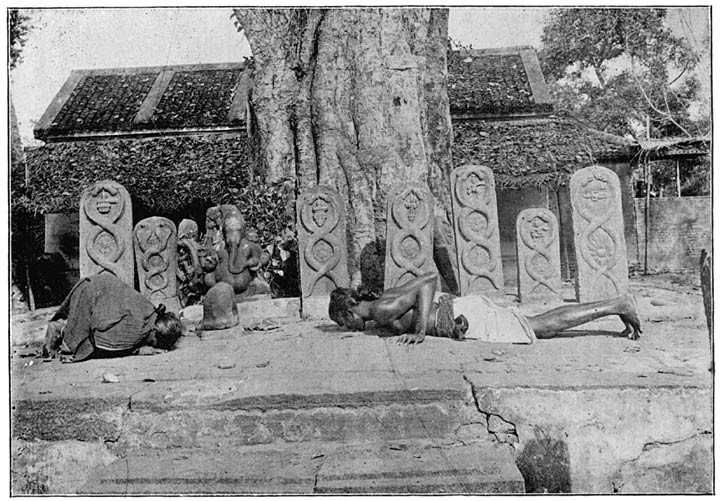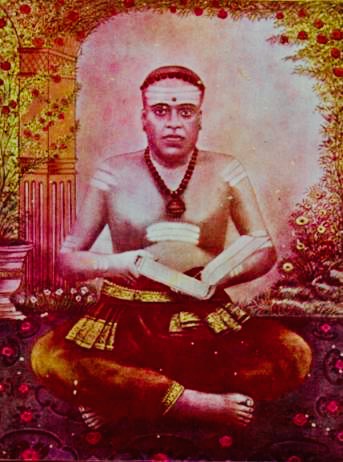|
Vellalas
Vellalar is a generic Tamil term used primarily to refer to various castes who traditionally pursued agriculture as a profession in the Indian states of Tamil Nadu, Kerala and northeastern parts of Sri Lanka. The Vellalar are members of several endogamous castes such as the numerically strong Arunattu Vellalar, Chozhia Vellalar, Karkarthar Vellalar, Kongu Vellalar, Thuluva Vellalar and Sri Lankan Vellalar. Etymology The earliest occurrence of the term ''Velaalar'' (வேளாளர்) in Sangam literature is in Paripadal where it is used in the sense of a landowner. The term Velaalar (வேளாளர்) can be derived from the word Vel (வேள்), Vel being a title that was borne by the Velir chieftains of Sangam age among other things. The word ''Vellalar'' (வெள்ளாளர் ) may come from the root ''Vellam'' for flood, which gave rise to various rights of land; and it is because of the acquisition of land rights that the Vellalar got their name. Hist ... [...More Info...] [...Related Items...] OR: [Wikipedia] [Google] [Baidu] |
Thuluva Vellalar
Thuluva Vellalar (Thondamandala Tuluva Vellalar), also known as Agamudaya Mudaliars and Arcot Mudaliars, is a caste found in northern Tamil Nadu, southern Andhra Pradesh and southern Karnataka, India. They were originally significant landowners. Etymology The term Vellalar may be derived from the word Vellam meaning water (flood), denoting their ability to control and store water for irrigation purposes. Since they migrated from the Tulu country, they are called Thuluva Vellalar. History An early Tamil tradition states that a king known variously as Ātontaicholan and Ādonda Chakravarthi brought a large number of agriculturists (now known as the ''Tuluva Vellalas'') from the Tulu areas in order to reclaim forest lands for cultivation in Thondaimandalam. Sometimes this migration of Tuluva Vellalas is also assigned to later Chola times when Hoysala Ballalas of Karnataka had occupied portions of Kanchipuram and Trichy. Demographics Their original stronghold in Present- ... [...More Info...] [...Related Items...] OR: [Wikipedia] [Google] [Baidu] |
Karkarthar
Kārkāthār (also known as Kaarukaatha Vellalar) is a Hindu caste in the Indian state of Tamil Nadu. Etymology Karkathar, ( 'rain', and , 'protector' in Tamil), signifying 'protector of rain'. It could also mean 'one who is dependent on rain', as means 'raincloud' and means 'to wait for' in Tamil. History In the years that immediately followed the Sangam age (from third to sixth century CE), the Tamil lands were ruled by a dynasty called Kalabhras. Scholar and historian M. Raghava Iyengar identifies the Kalabhras with the Kalappalar section of the Vellalar and equates king Achyuta Vikranta with Achyuta Kalappala the father of Meykandar who hailed from the Kaarukaathar community. Buddhadatta, the Pali writer who stayed in the Chola kingdom and authored Buddhist manuals refers (in the ''Nigamanagātha'' of ''Vinayavinicchaya'', verse 3179) to his patron Achyuta Vikranta who was then (fifth century CE) ruling the Chola kingdom as ''Kalamba-kula nandane'' meaning ''the favo ... [...More Info...] [...Related Items...] OR: [Wikipedia] [Google] [Baidu] |
Chozhia Vellalar
Chozhia Vellalar (also spelt as Sozhia Vellalar) is a caste from the Indian state of Tamil Nadu. The Chozhia Vellalars along-with Keerakarars, Kodikalarars and Vatrilaikarars is a sub-caste of the greater Vellalars. Distribution and migration The Sozhiya Vellalars were present predominantly in the delta districts of Tamil Nadu - Trichy, Thanjavur, Karur, Namakkal, Mannargudi, Nagappattinam. Nowadays they are present in almost all the districts of Tamil Nadu. Though the distribution of the community is found in most of the districts, they migrated to the other parts of Tamil Nadu from Trichy and Thanjavur areas towards the middle and second half of the 19th century. As they moved in, they always followed the river bed areas for settlement. Thus, the said community when came to Salem District they initially settled at Palamedu. When their life at Palamedu became difficult due to Theechati Kolliyars (Dacoits with fire) they moved out. Of these the persons who moved to Pandamanga ... [...More Info...] [...Related Items...] OR: [Wikipedia] [Google] [Baidu] |
Mudaliar
Mudaliar (alternatively spelled: Muthaliar, Mudali, Muthali, or Moodley ) is a Tamil title and surname. As title, it was historically given to high-ranking military officers and their descendants. The surname is most prevalent among Tamils from Tamil Nadu and Sri Lanka. Descendants of Tamil colonial migrants also bears variants of the name in countries such as South Africa, and else where in the Tamil diaspora. The title was primarily used by the communities like the Agamudaiyar, Karaiyar, Sengunthar and Vellalars. Other communities adopted it as means to present themselves as superior to the social status which they actually held. Etymology The title is derived from the Tamil word ''muthal'' or "muthar" meaning ''first'' with the suffix ''yaar'' denoting ''people''. The title is used in the same sense as simply meaning ''headman''. See also * Ceylonese Mudaliyars Mudali (or Mudaliyar) was a colonial title and office in Ceylon (now Sri Lanka) which was part of the native ... [...More Info...] [...Related Items...] OR: [Wikipedia] [Google] [Baidu] |
Tamil Nadu
Tamil Nadu (; , TN) is a States and union territories of India, state in southern India. It is the List of states and union territories of India by area, tenth largest Indian state by area and the List of states and union territories of India by population, sixth largest by population. Its capital and largest city is Chennai. Tamil Nadu is the home of the Tamil people, whose Tamil language—one of the longest surviving Classical languages of India, classical languages in the world—is widely spoken in the state and serves as its official language. The state lies in the southernmost part of the Indian peninsula, and is bordered by the Indian union territory of Puducherry (union territory), Puducherry and the states of Kerala, Karnataka, and Andhra Pradesh, as well as an international maritime border with Sri Lanka. It is bounded by the Western Ghats in the west, the Eastern Ghats in the north, the Bay of Bengal in the east, the Gulf of Mannar and Palk Strait to the south-eas ... [...More Info...] [...Related Items...] OR: [Wikipedia] [Google] [Baidu] |
Brill Academic Publishers
Brill Academic Publishers (known as E. J. Brill, Koninklijke Brill, Brill ()) is a Dutch international academic publisher founded in 1683 in Leiden, Netherlands. With offices in Leiden, Boston, Paderborn and Singapore, Brill today publishes 275 journals and around 1200 new books and reference works each year all of which are "subject to external, single or double-blind peer review." In addition, Brill provides of primary source materials online and on microform for researchers in the humanities and social sciences. Areas of publication Brill publishes in the following subject areas: * Humanities: :* African Studies :* American Studies :* Ancient Near East and Egypt Studies :* Archaeology, Art & Architecture :* Asian Studies (Hotei Publishing and Global Oriental imprints) :* Classical Studies :* Education :* Jewish Studies :* Literature and Cultural Studies (under the Brill-Rodopi imprint) :* Media Studies :* Middle East and Islamic Studies :* Philosophy :* Religious Studies ... [...More Info...] [...Related Items...] OR: [Wikipedia] [Google] [Baidu] |
Velir
The Velir (also known as Vellalar) were a royal house of minor dynastic kings and aristocratic chieftains in Tamilakam in the early historic period of South India. They had close relations with Chera, Chola and Pandya rulers through ruling and coronation rights. Sangam literature and inscriptions claim that they belong to the Kshatriya dynasty of Yadu (legendary king). Origin According to the '' Tholkappiyam'', the earliest work of Tamil literature, eighteen clans of the Velirs came from the city of '' Tuvarapati'' under the leadership of the sage Agastya.Pivot politics: changing cultural identities in early state formation processes By M. van Bakel page 165: "The Velir were an instrusive group in South India... It is now suggested that (...) may have been associated with the Yadava of Dvaraka../ref> The legend goes that all the gods and sages went to the Himalayas to attend the marriage of Shiva, Siva with Parvati due to which the earth started tilting to one side. Agas ... [...More Info...] [...Related Items...] OR: [Wikipedia] [Google] [Baidu] |
Sangam Literature
The Sangam literature (Tamil: சங்க இலக்கியம், ''caṅka ilakkiyam'';) historically known as 'the poetry of the noble ones' (Tamil: சான்றோர் செய்யுள், ''Cāṉṟōr ceyyuḷ'') connotes the ancient Tamil literature and is the earliest known literature of South India. The Tamil tradition and legends link it to three literary gatherings around Madurai and Kapāṭapuram ( Pandyan capitals): the first over 4,440 years, the second over 3,700 years, and the third over 1,850 years before the start of the common era. Scholars consider this Tamil tradition-based chronology as ahistorical and mythical. Most scholars suggest the historical Sangam literature era spanned from c. 300 BCE to 300 CE, while others variously place this early classical Tamil literature period a bit later and more narrowly but all before 300 CE. According to Kamil Zvelebil – a Tamil literature and history scholar, the most acceptable range for the Sangam l ... [...More Info...] [...Related Items...] OR: [Wikipedia] [Google] [Baidu] |
Sri Lankan Vellalar
Lankan Vellalar () is a caste in Sri Lanka, predominantly found in the Jaffna peninsula and adjacent Vanni region, who comprise about half of the Sri Lankan Tamil population. They were traditionally involved in agriculture, but also included merchants, landowners and temple patrons. They also form part of the Sri Lankan Tamil diaspora. They are reputed as a ritually and numerical dominant caste, who have contributed among the political elites of the Sri Lankan Tamils. Many of the Tamil Mudaliyars, a high colonial rank, were drawn from the Vellalar caste. In Eastern Sri Lanka are the Vellalars as other prominent castes there, further divided into ''kudis'' or matrilineal clans. Etymology The word ''Vellalar'' is derived from their art of irrigation and cultivation. The word comes from the Tamil words ''veḷḷam'' ("flood", "water" or "abundance") and ''āṇmai'' ("lordship" or "management"); thus the word literally means "those who manage water" or "lords of the floods" ... [...More Info...] [...Related Items...] OR: [Wikipedia] [Google] [Baidu] |
Kongu Vellalar
Kongu Vellalar is a community found in the Kongu region of Tamil Nadu, India. Etymology The Vellalar of the Kongu country came to be known as Kongu Vellalar. They are also known by names such as "Bupaalan", Gangavamsam, Kudiyaanavar and Vivasaayi, and use the title Gounder as a caste appellation in their personal names. Origin According to the ''Kongu Vellalar Puranam'', a 19th-century work by Mahavidwan Kandasamy Kavirayar, the Vellalar of the Kongu country trace their origin to Marabalan, a mythical figure who was created from the river Ganges to rid the world of hunger. Marabalan turned to agriculture and his descendants became the Vellalar. Marabalan had various titles such as Gangavamsa, Devar, Vellalar, Bupaalan, etc. Interestingly the Gandadikara Vokkaligas of the neighbouring parts of Karnataka also claim origin from the banks of the Ganges.:”Gangadikara is a contraction of the term Gangawadikara (A man of Gangavadi)” According to Burton Stein, the Gangadikara ... [...More Info...] [...Related Items...] OR: [Wikipedia] [Google] [Baidu] |




